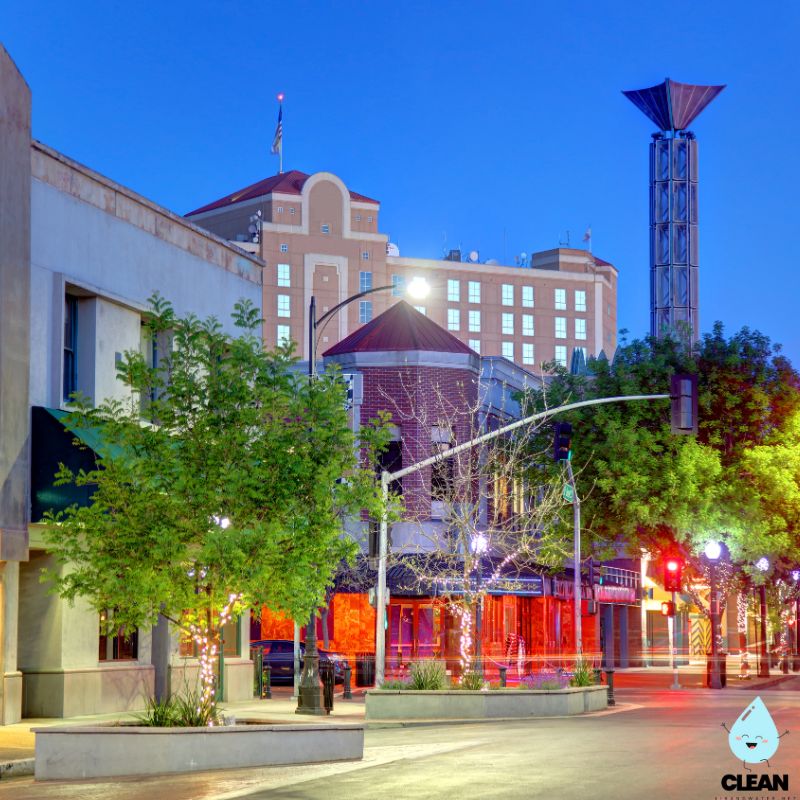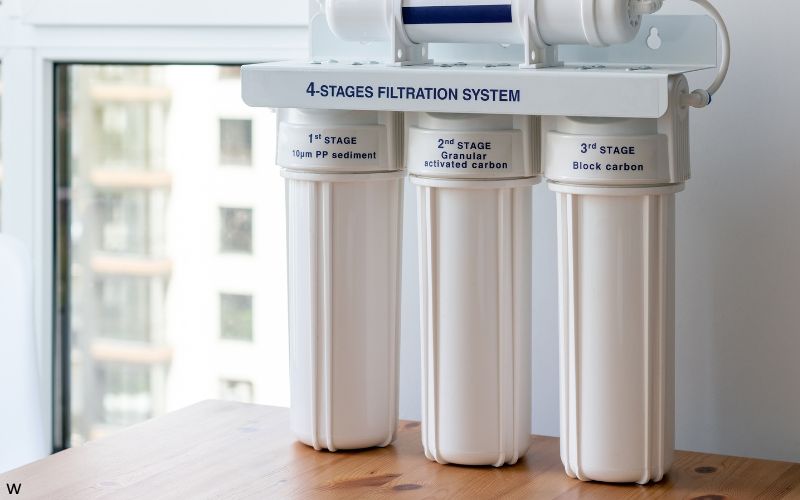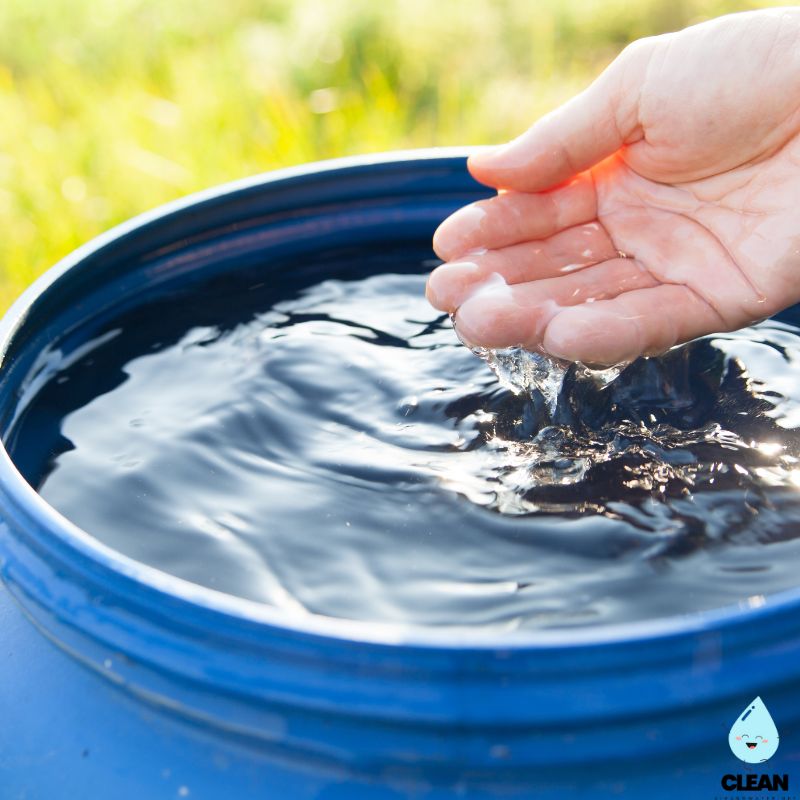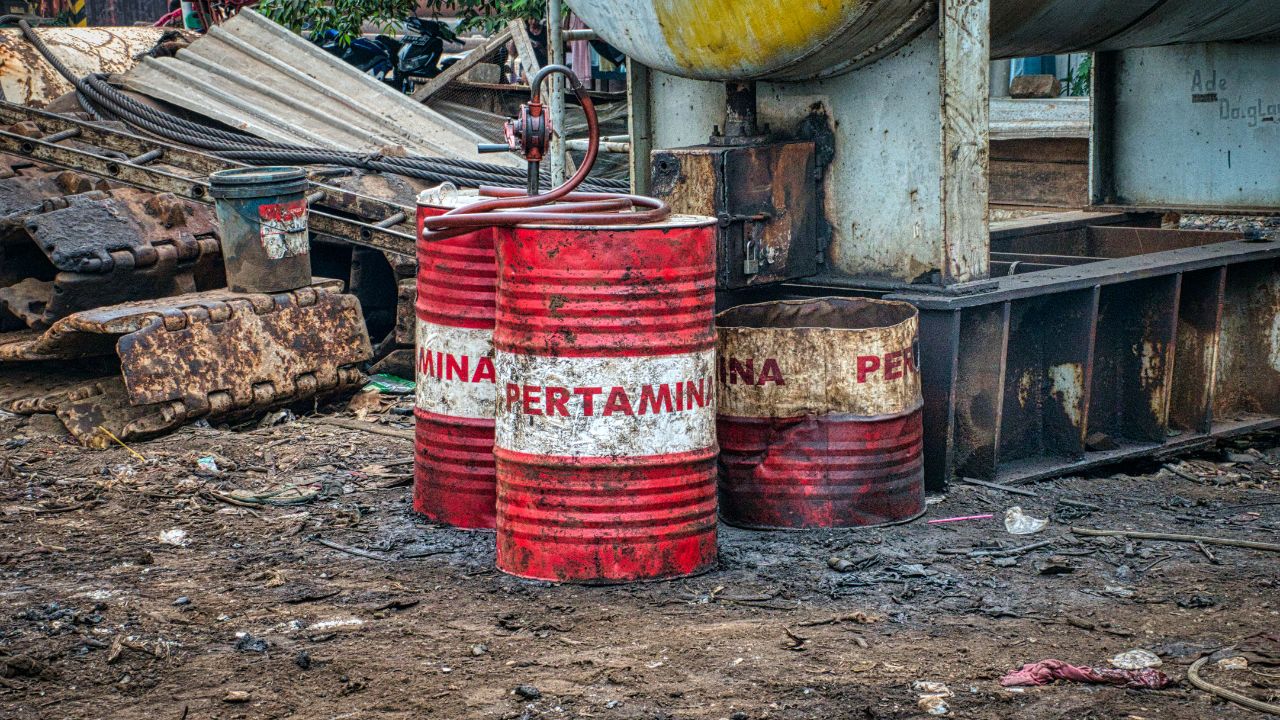Modesto Water Quality at a Glance
serious contamination
Is Modesto Water Safe to Drink?
Technically Compliant, But Highly Concerning – Modesto water meets federal standards but contains 23 different contaminants, 15 exceeding health guidelines. Key issues include PFOS at 11 ppt, widespread agricultural contamination (nitrates, pesticides), and cancer-causing chemicals like 1,2,3-TCP, arsenic, and chromium-6. The city has been dubbed one of the worst for water quality in the U.S. due to agricultural runoff and industrial pollution.
⚠️ Key Concerns for Modesto Residents
- PFAS “Forever Chemicals”: PFOS detected at 11 ppt in Well 25; ongoing lawsuits for PFAS contamination affecting all 219K residents
- Agricultural Contamination: 1,2,3-TCP from soil fumigants; nitrates from fertilizers; 37% of groundwater exceeds safety benchmarks
- Cancer-Causing Chemicals: Arsenic, chromium-6, uranium, and multiple trihalomethanes from water treatment processes
- School Water Crisis: Multiple schools forced to shut down water fountains; 42,000 homes received free bottled water due to contamination
Read the full report below for detailed analysis, city-specific data, and actionable recommendations for Modesto residents.
Modesto – California – Water Quality Report 2025: PFAS Testing, Infrastructure Concerns & Safety across your city
Modesto’s water system is managed by the City of Modesto and the Modesto Irrigation District (MID), serving both the city proper and surrounding communities including Del Rio, Salida, Empire, Grayson, and portions of Ceres and Turlock. The city utilizes a dual-source approach, combining treated surface water from the Tuolumne River with groundwater from numerous wells throughout the region. This mixed water system has been in place since 1995, when the Modesto Regional Water Treatment Plant (MRWTP) began operation to supplement the city’s groundwater supply.
The Modesto Regional Water Treatment Plant, owned and operated by MID, was completed in 1994 and expanded in 2016. It now treats and delivers up to 67,000 acre-feet per year of high-quality drinking water from the Tuolumne River, which originates high in the Sierra Nevada Mountains. The plant uses advanced treatment processes to ensure the water meets or exceeds all federal drinking water standards. The city’s groundwater comes from 77 active wells that tap into the local aquifer. The Water Quality Department conducts extensive testing, taking approximately 892 samples monthly to monitor for organic and inorganic chemicals, radioactivity, microbial contamination, and general minerals, working diligently to address emerging environmental issues and comply with drinking water regulations.

Modesto Water Quality: Current Status (2024-2025)
Latest Testing Results
- Compliance Status: Modesto’s water meets all federal and state drinking water standards. The city conducts extensive water quality testing, with approximately 892 samples taken monthly for various contaminants, analyzed by state-certified laboratories.
- 1,2,3-Trichloropropane (TCP): This synthetic chemical has been detected in some Modesto groundwater wells. TCP is a legacy contaminant from agricultural soil fumigants used decades ago. Treatment systems using granular activated carbon are being implemented to address affected wells.
- PCE Contamination: A Superfund site in Modesto with tetrachloroethylene (PCE) contamination is being actively managed with groundwater treatment and soil vapor extraction systems, which have removed significant quantities of contaminants.
Dual Water Sources
- Tuolumne River: Originating in the Sierra Nevada Mountains, this surface water source undergoes comprehensive treatment at the Modesto Regional Water Treatment Plant before distribution.
- Groundwater Wells: The city operates 77 active wells throughout the service area that tap into the local aquifer, providing a significant portion of Modesto’s water supply, particularly during drought conditions.
- Balanced Approach: This dual-source system ensures reliable water delivery while minimizing impacts on the groundwater supply, especially during drought periods when surface water allocations may be reduced.
Treatment Process
- Surface Water Treatment: The Modesto Regional Water Treatment Plant uses advanced processes to treat Tuolumne River water, removing contaminants, pathogens, and improving taste and odor.
- Groundwater Treatment: Some wells require specialized treatment for specific contaminants like TCP and nitrates. Granular activated carbon (GAC) systems are being installed at affected wells to remove TCP.
- Ongoing Improvements: The city continuously evaluates and upgrades treatment processes to address emerging contaminants and maintain high water quality standards.
Water Quality Monitoring
- Comprehensive Testing: The City of Modesto tests for a wide range of potential contaminants including organic and inorganic chemicals, radioactive substances, microbial contaminants, and general minerals.
- Regulatory Compliance: All testing is conducted according to schedules that meet or exceed state and federal regulations, with results reported to the State Water Resource Control Board.
- Public Reporting: Annual Consumer Confidence Reports are published and distributed to all customers, summarizing testing results and confirming the safety of the drinking water supply.
Drought Response
Modesto has experienced significant impacts from California’s recurring droughts, with surface water allocations from the Modesto Irrigation District decreasing substantially during dry periods. In recent years, deliveries have dropped from an average of 30 million gallons per day to approximately 11.5 million gallons per day due to lower than average rainfall and snowpack. This reduction has required increased reliance on groundwater sources, highlighting the importance of the city’s dual-source approach. Water conservation programs are actively promoted to educate residents on saving water and reducing demand during drought conditions. The city has implemented various stages of water use restrictions when necessary, balancing the need for conservation with maintaining essential water services for residents and businesses.
Recommendations for Modesto Residents

Review Water Quality Reports
The City of Modesto publishes an annual Consumer Confidence Report with detailed information about water quality testing and results. Review this document to understand what’s in your water and how it compares to regulatory standards.

Consider Home Filtration
If concerned about specific contaminants like TCP, PFAS, or disinfection byproducts, consider installing a home water filtration system. Look for NSF-certified filters with solid activated carbon blocks, which are effective at removing many common contaminants.

Conserve Water
Modesto’s water supply faces pressure from recurring droughts. Practice water conservation by following city guidelines, fixing leaks promptly, installing water-efficient fixtures, and reducing outdoor irrigation during dry periods.

Flush Water After Non-Use
If water has been sitting in pipes for extended periods (such as after returning from vacation), run cold water taps for a few minutes to flush out any stagnant water. This is especially important if you have older plumbing or are in an area with known groundwater contamination.

Report Water Issues
If you notice problems with your water quality such as unusual taste, odor, or appearance, contact the City of Modesto Water Services department at (209) 577-5395. For water waste or conservation concerns, the city has a dedicated reporting system to address these issues.
Quality News About Your Water
Get the comprehensive water quality news coverage you need with our dedicated US Water News Service. From coast to coast, we deliver in-depth reporting and expert analysis on PFAS contamination, EPA regulatory changes, infrastructure developments, and emerging water safety issues affecting communities nationwide. While mainstream media only covers the biggest stories, we provide the detailed, ongoing coverage that helps you understand the full scope of America’s water challenges. Whether you’re a concerned citizen, water professional, or community leader, our daily updates and analytical insights keep you informed about the issues that matter most to public health and environmental safety.
Frequently Asked Questions
Is Modesto’s tap water safe to drink?
Yes, Modesto’s tap water meets all federal and state drinking water standards and is considered safe to drink. The City of Modesto and Modesto Irrigation District conduct extensive water quality testing, taking approximately 892 samples monthly for various contaminants.
The water quality is maintained through rigorous testing and treatment processes at both the Modesto Regional Water Treatment Plant for surface water and at individual well sites for groundwater. While some contaminants have been detected in certain wells, including 1,2,3-TCP from legacy agricultural practices and PFAS chemicals, treatment systems are being implemented to ensure these contaminants are removed or reduced to safe levels before the water reaches consumers. The city publishes an annual Consumer Confidence Report that provides detailed information about water quality testing and results.
What is 1,2,3-TCP and why is it in Modesto’s water?
1,2,3-Trichloropropane (TCP) is a synthetic chemical that has been detected in some of Modesto’s groundwater wells. Here’s what residents should know:
1. Source: TCP originated from soil fumigants used in agriculture from the 1940s through the 1980s. These fumigants, manufactured by companies like Shell and Dow, contained TCP as an impurity that was not removed during manufacturing.
2. Properties: TCP is extremely persistent in the environment with a half-life of hundreds of years. It’s heavier than water and mobile, allowing it to penetrate deeply into aquifers.
3. Health Concerns: California classifies TCP as a “potent carcinogen” and has established a very low Maximum Contaminant Level of 5 parts per trillion.
4. Treatment: Affected water suppliers are installing granular activated carbon (GAC) treatment systems to remove TCP from drinking water before distribution.
The City of Modesto is addressing TCP contamination through treatment and monitoring to ensure water meets safety standards.
How is Modesto’s water treated?
Modesto uses different treatment processes depending on the water source:
• Surface Water Treatment: The Modesto Regional Water Treatment Plant treats water from the Tuolumne River using multi-stage processes including:
1. Coagulation and flocculation to bind particles together
2. Sedimentation to allow particles to settle
3. Filtration to remove smaller particles
4. Disinfection to kill bacteria and viruses
• Groundwater Treatment: Depending on the specific well and contaminants present, groundwater may undergo:
1. Granular activated carbon filtration for removing TCP and organic contaminants
2. Aeration to remove volatile compounds
3. Disinfection with chlorine to ensure microbiological safety
These treatment processes ensure that Modesto’s water meets all regulatory standards before distribution to consumers.
How does drought affect Modesto’s water supply?
Drought significantly impacts Modesto’s water supply in several ways:
Reduced Surface Water:
• Surface water allocations from the Modesto Irrigation District decrease during drought conditions
• In recent years, deliveries have dropped from an average of 30 million gallons per day to approximately 11.5 million gallons per day
• Lower snowpack in the Sierra Nevada Mountains means less runoff into the Tuolumne River
Increased Groundwater Reliance:
• With reduced surface water availability, Modesto must rely more heavily on groundwater wells
• Increased pumping can stress the aquifer and potentially affect water quality
Conservation Measures:
• Water use restrictions may be implemented based on drought severity
• The city promotes conservation through education programs and water-saving incentives
Modesto’s dual-source water system helps provide resilience during drought periods, but conservation remains important for long-term sustainability.
Contaminants of Concern

1,2,3-Trichloropropane (TCP)
Source: Agricultural soil fumigants used from the 1940s through the 1980s; TCP was an impurity in these products that has persisted in groundwater for decades
Health Effects: Classified as a potent carcinogen; laboratory studies have shown increased cancer risk with long-term exposure and potential effects on the liver, kidneys, and central nervous system
Current Status: Detected in some Modesto groundwater wells; treatment systems using granular activated carbon are being installed to remove TCP and meet California’s Maximum Contaminant Level of 5 parts per trillion

Nitrates and Other Inorganic Contaminants
Source: Agricultural fertilizers, animal waste, and wastewater; naturally occurring minerals in the aquifer such as uranium and arsenic
Health Effects: Nitrates can cause methemoglobinemia (“blue baby syndrome”) in infants; uranium and arsenic are associated with increased cancer risk and other health effects with long-term exposure
Current Status: Studies have found these contaminants exceeding regulatory benchmarks in portions of the aquifer, particularly in shallower private wells; city wells are regularly monitored and treated as needed to remain below Maximum Contaminant Levels
Please read – our information
The information presented on cleanairandwater.net is compiled from official water quality reports, trusted news sources, government websites, and public health resources. While we strive for accuracy and thoroughness in our presentations, we are not scientists, engineers, or qualified water quality professionals.
Our mission is to present water quality information in an accessible, real-world format that helps people understand what’s in their water and make informed decisions about their health and safety. We believe that complex environmental information should be available to everyone in a format that’s easy to understand.
We make every effort to ensure our content is current and accurate, but we cannot guarantee that all information is complete or error-free. This website should not replace official communications from your local water utility or health department. We always recommend consulting official sources for the most up-to-date information regarding your specific water system.
Clean Air and Water is not liable for any unintentional errors, omissions, or outdated information. The content on this site is provided for informational purposes only and should not be considered professional advice.


